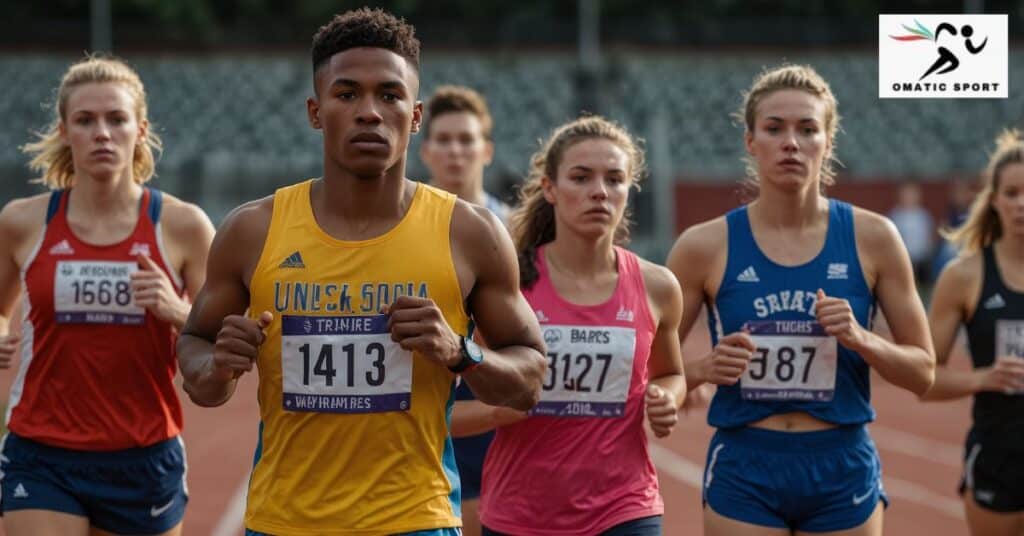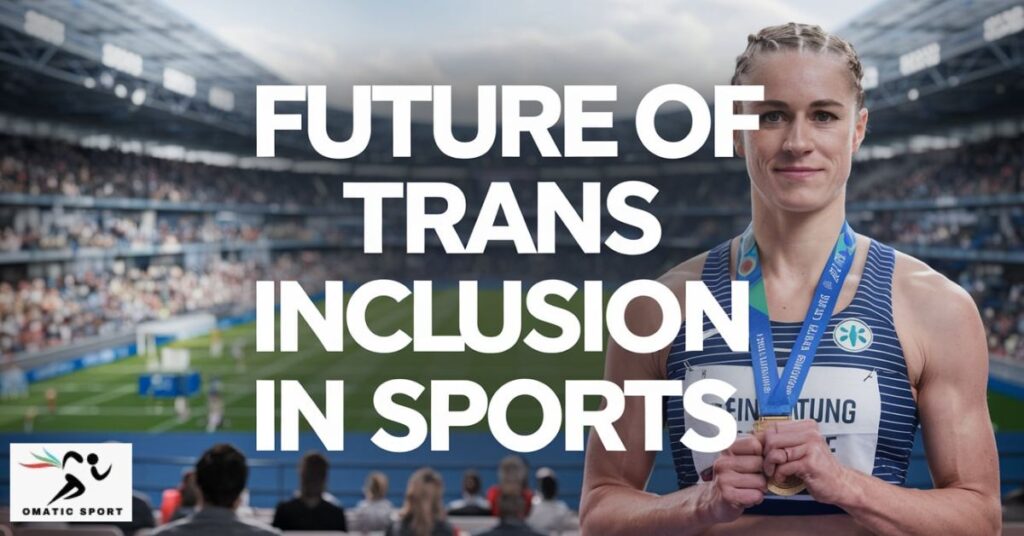In the ever-evolving landscape of athletics. Trans Women in Sports few topics spark as much debate as the inclusion of transgender women in competitive sports. This complex issue touches on fundamental questions of fairness, identity, and the very nature of athletic categories. Let’s dive deep into this multifaceted subject, exploring the science, policies, and human stories at the heart of the matter.
Understanding Transgender Identity in Athletics

Transgender athletes have been part of the sporting world for decades, but their visibility and acceptance have grown significantly in recent years. To grasp the nuances of this topic, we must first understand some key terms:
- Transgender: Individuals whose gender identity differs from their sex assigned at birth
- Trans woman: A person assigned male at birth who identifies as a woman
- Gender identity: One’s internal sense of being male, female, or another gender
- Transition: The process of changing one’s gender presentation to align with their identity
Trans women athletes face unique challenges as they navigate the world of competitive sports. Many begin their athletic careers before transitioning, leading to questions about fairness when they compete in women’s categories post-transition.
The Science Behind Performance and Gender
At the heart of the debate lies the question: Do trans women have a physiological advantage over cisgender women in sports? The answer isn’t simple, as it involves a complex interplay of biological factors.
Biological Factors Influencing Athletic Performance
| Factor | Potential Impact |
|---|---|
| Muscle mass | Greater strength and power |
| Bone density | Improved skeletal support and injury resistance |
| Height | Advantage in certain sports (e.g., basketball, volleyball) |
| Lung capacity | Enhanced endurance and oxygen utilization |
| Cardiovascular system | Better oxygen delivery to muscles |
Research has shown that, on average, individuals assigned male at birth have certain physiological advantages in sports. However, the extent to which these advantages persist after hormone therapy is a subject of ongoing study.
Effects of Hormone Therapy on Athletic Performance
Trans women often undergo hormone therapy as part of their transition, which can significantly alter their physiology. Key changes include:
- Decrease in muscle mass and strength
- Reduction in bone density
- Changes in fat distribution
- Decreased red blood cell count
“After 1 year of hormone therapy, trans women have significantly reduced muscle mass and strength, but some residual advantage may remain.” – Dr. Joanna Harper, researcher on transgender athletes
The timeline and extent of these changes vary among individuals, complicating the creation of one-size-fits-all policies.
Policy Approaches and Their Impacts

Sports organizations worldwide have grappled with how to create inclusive yet fair policies for transgender athletes. Let’s examine some key approaches:
International Olympic Committee (IOC) Guidelines
The IOC has been at the forefront of transgender inclusion in elite sports. Their guidelines have evolved over time:
- 2004: Required gender reassignment surgery and legal recognition
- 2015: Removed surgery requirement, focused on testosterone levels
- 2021: Moved away from universal rules, encouraging sport-specific policies
NCAA Policies
The National Collegiate Athletic Association (NCAA) in the United States has its own set of guidelines:
- Trans women must complete one year of testosterone suppression before competing in women’s sports
- Ongoing hormone monitoring throughout athletic eligibility
- Sport-specific policies may apply additional requirements
Sport-Specific Regulations
Different sports have adopted varied approaches based on their unique characteristics:
- Swimming: FINA (now World Aquatics) requires transition before age 12
- Rugby: World Rugby has banned trans women from elite women’s matches due to safety concerns
- Track and Field: World Athletics requires low testosterone levels for at least 12 months
These policies highlight the challenge of balancing inclusion with competitive fairness and safety.
Fairness and Inclusion: A Delicate Balance
The debate over trans inclusion in sports often centers on two competing principles:
- Competitive equity: Ensuring a level playing field for all athletes
- Rights of transgender individuals: Allowing people to compete in categories aligning with their gender identity
Advocates for inclusion argue that sport should be accessible to all, regardless of gender identity. They point out that:
- Trans women are women and should be treated as such in all aspects of life, including sports
- The benefits of inclusion (mental health, social integration) outweigh potential competitive advantages
- Many trans women do not have significant physiological advantages after hormone therapy
On the other hand, those focusing on competitive fairness raise concerns about:
- Protecting opportunities for cisgender women in sports
- Maintaining the integrity of women’s sports categories
- Potential safety issues in contact sports
Finding a balance between these perspectives remains a significant challenge for policymakers and sports organizations.
Intersex Athletes and Sport Categories
The discussion around trans athletes has also brought attention to intersex individuals in sports. Intersex people are born with sex characteristics that don’t fit typical binary notions of male or female bodies.
Key points about intersex athletes:
- Some may have natural testosterone levels higher than average for women
- Policies aimed at trans women often affect intersex athletes as well
- Cases like that of Caster Semenya have sparked debates about testosterone limits in women’s sports
This raises questions about the very nature of sport categories:
- Should we move beyond binary male/female divisions?
- Could a hormone-based classification system be more equitable?
- How can we ensure fair competition while respecting diverse bodies?
Psychological and Social Aspects

The debate over trans inclusion in sports has significant psychological and social implications:
Mental Health Impacts
- Trans athletes often face high levels of stress and anxiety due to scrutiny and discrimination
- Exclusion from sports can exacerbate gender dysphoria and depression
- Participation in sports can be crucial for mental well-being and self-esteem
Bullying and Discrimination
Trans athletes frequently encounter:
- Harassment from competitors, spectators, or media
- Misidentifying and Previous name
- Exclusion from team activities or facilities
Positive Outcomes of Inclusion
Despite challenges, inclusion can lead to:
- Increased acceptance and understanding of transgender individuals
- Diverse role models for young athletes
- Improved mental health and social integration for trans people
Trans Athletes’ Experiences
To truly understand this issue, we must listen to the voices of trans athletes themselves. Here are a few notable examples:
- Lia Thomas: A collegiate swimmer who sparked intense debate after transitioning and competing in women’s events
- Laurel Hubbard: The first openly transgender athlete to compete in the Olympics (weightlifting)
- CeCe Telfer: An NCAA champion in track and field who has advocated for trans inclusion
These athletes’ stories highlight both the challenges and triumphs of trans competitors in sports.
The Future of Trans Inclusion in Sports

As research evolves and societal attitudes shift, the landscape of trans inclusion in sports continues to change. Some potential future developments include:
- More nuanced, sport-specific policies based on emerging research
- Increased focus on youth sports and early transition
- Development of new competitive categories or classification systems
- Greater emphasis on education and awareness in sporting communities
Fostering Inclusive Sports Environments
Creating more inclusive sports environments requires effort from all stakeholders. Here are some steps that can be taken:
- Education and Awareness
- Implement training programs for coaches, officials, and athletes
- Develop resources explaining trans inclusion policies and best practices
- Ally Support and Advocacy
- Encourage cisgender athletes to speak up for their trans teammates
- Form support networks for trans athletes and their families
- Creating Safe Spaces
- Ensure access to appropriate changing facilities and bathrooms
- Establish clear anti-discrimination policies and enforcement mechanisms
- Policy Development
- Engage with trans athletes, scientists, and ethicists when crafting policies
- Regularly review and update guidelines based on new research and feedback
Conclusion
The inclusion of trans women in sports is a complex issue that touches on fundamental questions of fairness, identity, and the purpose of athletic competition. As we continue to grapple with these challenges. It’s crucial to approach the topic with empathy, scientific rigor, and a commitment to creating a sports world that is both fair and inclusive.
By fostering open dialogue, supporting ongoing research, and centering the experiences of trans athletes. We can work towards a future where all individuals can enjoy the benefits of sports participation, regardless of their gender identity.
The path forward may not be straightforward, but with thoughtful consideration and a willingness to adapt, the sporting world can become a more welcoming place for all athletes.

Roman Moris is a skilled writer with expertise in team names and game names. As a member of the Techy Lous team, he blends creativity with a deep understanding of technology, delivering engaging content on the latest innovations in gadgets, AI, and tech trends.

